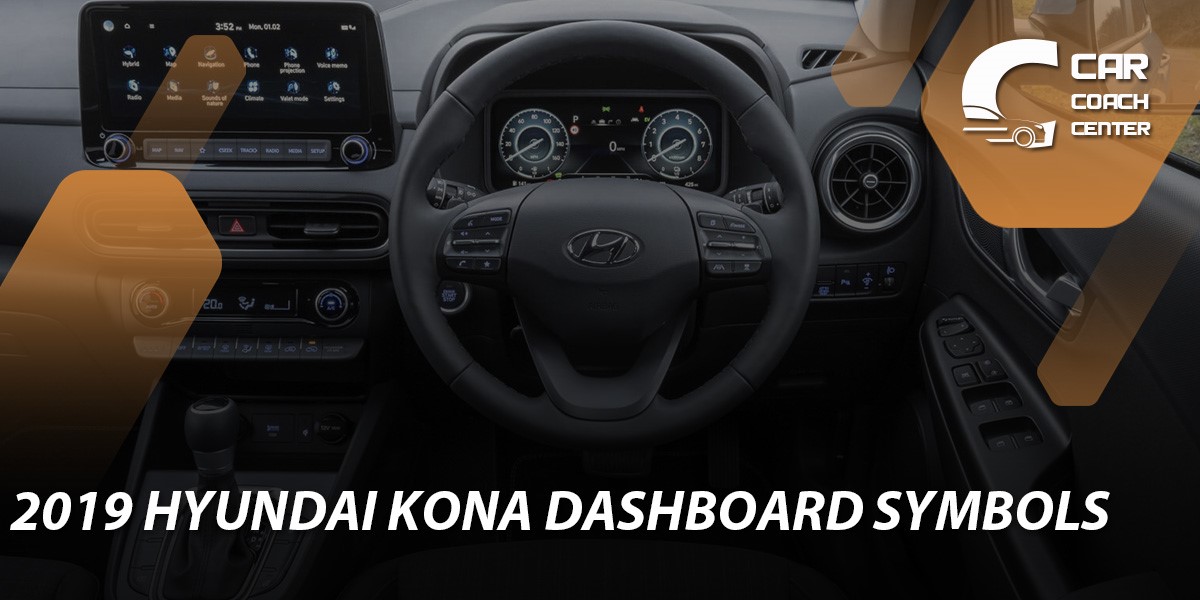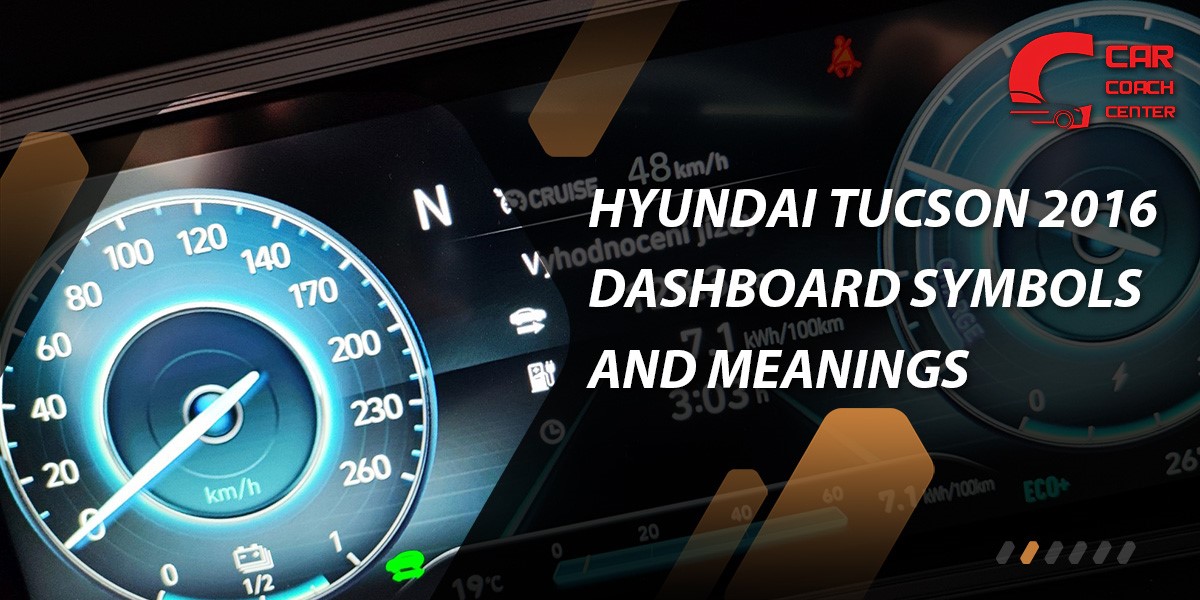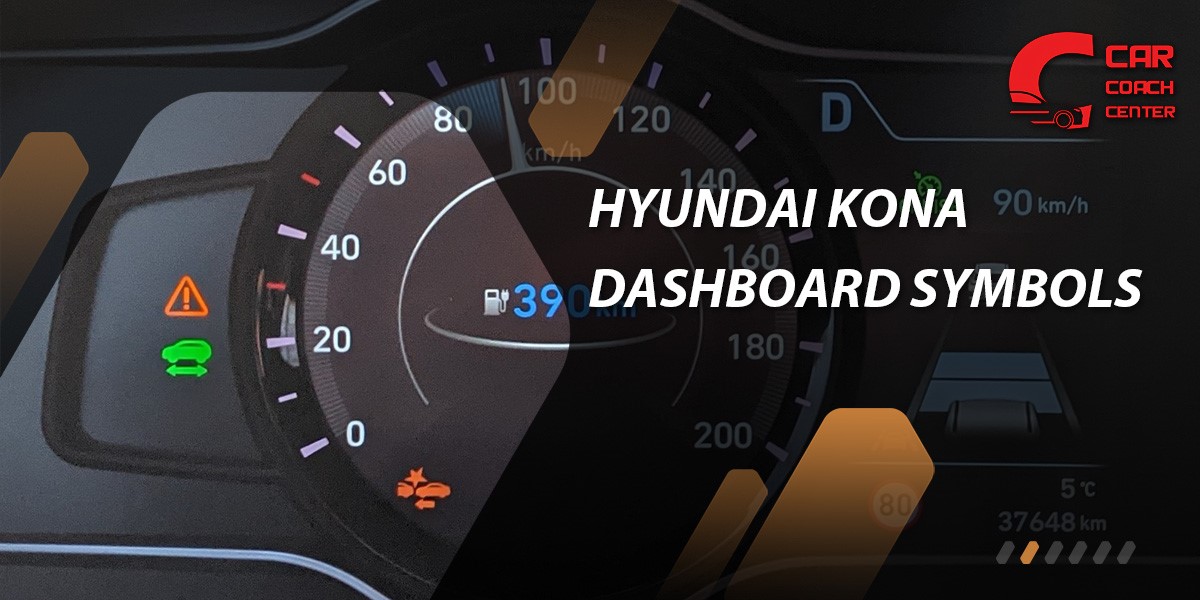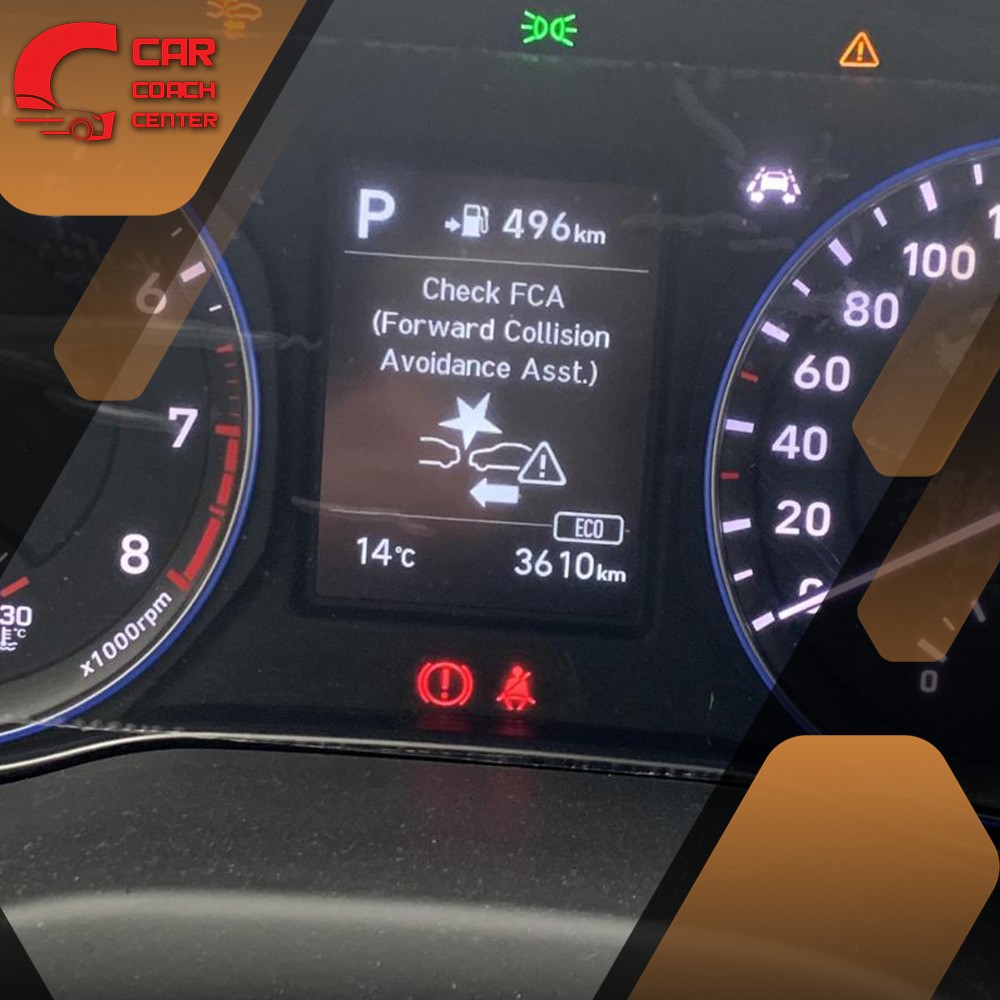Hyundai Kona Dashboard Symbols
When we slip behind the wheel of our Hyundai Kona, we enter a realm where sophisticated technology and artful design converge to communicate with us through an array of dashboard symbols. These cryptic pictographs form a secret language, relaying essential information about our car’s health, safety, and performance.

As drivers, understanding the meaning behind these dashboard symbols empowers us to make informed decisions and ensures a smooth, secure journey on the roads. In this article, we embark on an enlightening journey to decipher the enigmatic Hyundai Kona dashboard symbols, demystifying their significance and unveiling their subtle messages. Beyond mere decorative elements, these symbols serve as vital channels of communication between the car and its driver, transcending language boundaries to deliver critical alerts and facilitate a seamless driving experience.
Join us as we explore the depths of this dashboard symphony, uncovering the familiar warning lights and the lesser-known symbols, all contributing to the symmetrical fusion of aesthetics and functionality that defines the Hyundai Kona’s dashboard. Let’s embark on a quest to enhance our automotive literacy, decode the visual lexicon of our vehicles, and pave the way to safer, more knowledgeable motoring.
Decoding the Enigmatic: Unraveling the Meaning Behind Hyundai Kona Dashboard Symbols
As we embark on our automotive journey with the Hyundai Kona, the dashboard greets us with various symbols, each with a unique purpose and message. These dashboard symbols are the car’s way of communicating with us, providing vital information about its health, status, and performance. Understanding these enigmatic symbols is essential for any Hyundai Kona driver, as they empower us to respond promptly to potential issues and ensure a safe driving experience.
The Exclamation Mark within a Triangle
This attention-grabbing symbol demands immediate attention when it illuminates the dashboard. Typically colored red, it signals a critical warning, indicating a serious issue requiring immediate action. Such issues might include low brake fluid levels, engine overheating, or malfunctioning of the vehicle’s electronic systems. Ignoring this warning could lead to severe damage to the car or compromise the safety of passengers and other road users.
The Oil Can with a Droplet
This symbol, often resembling an oil can with a droplet falling from its spout, indicates that the engine’s oil pressure is too low. A drop in oil pressure can result from various factors, including insufficient oil levels or a malfunctioning oil pump. It is crucial to address this issue promptly to prevent engine damage or potential breakdowns.
Battery Indicator
Represented by a simple icon of a battery, this symbol informs the driver about the status of the car’s battery. If the battery light illuminates while the vehicle is running, it indicates an issue with the charging system. It could be due to a faulty alternator, loose battery connections, or a worn-out battery. Ignoring this warning might lead to the car stalling or the battery draining, leaving you stranded.
Tire Pressure Monitoring System (TPMS) Warning
Depicted as an exclamation mark inside a U-shaped symbol, the TPMS warning indicates that one or more tires have low air pressure. Underinflated tires can reduce fuel efficiency, cause poor handling, and increase the risk of tire blowouts. Checking and adjusting tire pressure to the recommended levels is essential for safety and performance.
Engine Temperature Warning
This symbol resembles a thermometer immersed in liquid and warns drivers about the engine’s temperature exceeding safe limits. Overheating can occur due to coolant leaks, malfunctioning fans, or a faulty thermostat. Driving with an overheated engine can cause severe damage, leading to expensive repairs.
Seatbelt Reminder
Safety is a priority, and the seatbelt reminder symbol is a constant reminder to buckle up before hitting the road. The symbol typically depicts a seated figure wearing a seatbelt. It illuminates until all passengers have fastened their seatbelts, promoting safe driving habits and reducing the risk of injuries in case of an accident.
Your Car’s Secret Language: Understanding the Communication of Dashboard Symbols
Beyond the mechanical marvel beneath the hood of our cars, there exists a hidden language of communication – a symphony of symbols displayed on the dashboard. Like sophisticated non-verbal communication, these dashboard symbols convey essential information about our vehicle’s status, ensuring a seamless dialogue between the car and its driver.
Understanding this secret language is a crucial aspect of responsible car ownership, enabling us to decipher the messages our cars are trying to convey and respond appropriately to ensure optimal performance and safety.
Visual Cues for Complex Systems
Modern vehicles are equipped with interconnected systems to provide a smooth driving experience. However, monitoring these systems manually would be impractical. Instead, car manufacturers have cleverly incorporated dashboard symbols that serve as visual cues, alerting us when something requires our attention. From engine performance and tire pressure to fuel levels and battery health, these symbols offer an immediate snapshot of various critical aspects of our car’s functionality.
Language of Warnings and Alerts
Dashboard symbols are pivotal in warning drivers about potential issues before they escalate into serious problems. These symbols promptly catch our attention, whether it’s a sudden drop in oil pressure, engine overheating, or a malfunctioning electronic component. Understanding their meanings empowers us to take swift action, preventing further damage and potentially avoiding costly repairs or breakdowns.

Ensuring Safety and Security
The secret language of dashboard symbols is deeply entwined with the driver and passengers’ safety and security. Seatbelt reminders, airbag indicators, and anti-lock brake system (ABS) symbols are just a few examples of how our cars communicate their commitment to ensuring our well-being on the road. Ignoring these symbols could compromise our safety during an unexpected event or collision.
Monitoring Fuel Efficiency
For those conscious of their environmental impact and fuel consumption, dashboard symbols offer valuable insights into the car’s fuel efficiency. Indicators for eco-mode, cruise control, and instantaneous fuel consumption can help drivers make more informed decisions to optimize fuel usage and reduce emissions.
Embracing Technological Advancements
As automotive technology advances rapidly, dashboard symbols are also evolving. Smart features and connectivity options are integrated into symbols related to smartphone pairing, voice recognition, and advanced driver assistance systems (ADAS). Understanding these symbols enables us to harness the full potential of our car’s cutting-edge technology.
Empowering Drivers through Knowledge
Ultimately, comprehending the language of dashboard symbols empowers drivers to take charge of their driving experience. By staying informed about their car’s performance, drivers can practice proactive maintenance, promptly address issues, and develop a stronger sense of confidence and control behind the wheel.
The Roadmap to Safety: How Hyundai Kona Dashboard Symbols Enhance Your Driving Experience
In the ever-evolving landscape of automotive technology, the Hyundai Kona stands out as a beacon of innovation, blending cutting-edge features with a user-friendly interface. At the heart of this integration lies the dashboard – a dashboard adorned with many symbols, each with a specific purpose.
Beyond being aesthetic embellishments, these dashboard symbols play a pivotal role in enhancing the driving experience, primarily by ensuring the vehicle’s and its occupants’ safety. Let’s delve into how the Hyundai Kona’s dashboard symbols act as a roadmap to safety, guiding drivers toward a secure and enjoyable journey on the road.
Real-Time Monitoring and Alerts
The Hyundai Kona’s dashboard symbols serve as vigilant sentinels, constantly monitoring various aspects of the car’s performance. From engine temperature to tire pressure, these symbols provide real-time updates, promptly alerting drivers to anomalies or potential issues. By staying informed about the car’s condition, drivers can take proactive measures to prevent accidents or breakdowns.
Enhancing Situational Awareness
Dashboard symbols seamlessly extend our car’s sensory system. They provide critical information that fosters better situational awareness for the driver. Symbols related to lane departure warning, blind-spot detection, and adaptive cruise control prevent collisions and keep drivers conscious of their surroundings.
Promoting Responsible Driving
Safety is paramount, and the Hyundai Kona’s dashboard symbols contribute to responsible driving habits. Seatbelt reminders and speed limit indicators encourage occupants to buckle up and adhere to speed limits, reducing the risk of injuries in the event of an accident.
Optimizing Vehicle Performance
Apart from safety, these symbols also contribute to the overall performance of the Hyundai Kona. Indicators for eco-mode, gear shifting, and engine diagnostics enable drivers to optimize fuel efficiency, reduce emissions, and extend the lifespan of their vehicles.

Simplifying Vehicle Maintenance
Regular maintenance is essential for the longevity of any car. The dashboard symbols in the Hyundai Kona aid in simplifying the maintenance process by notifying drivers of scheduled service intervals, oil changes, and filter replacements. This proactive approach ensures the car remains in peak condition, minimizing the risk of unexpected malfunctions.
Building Trust and Confidence
Informative and reliable dashboard symbols foster trust and confidence in the Hyundai Kona. Drivers can rely on these symbols to provide accurate feedback and dependable warnings, ensuring that the car is equipped to handle various situations.

When Warning Lights Dance: How to Respond to Critical Hyundai Kona Dashboard Symbols
Some notes demand immediate attention and action in the symphony of dashboard symbols that grace the Hyundai Kona’s instrument cluster. When warning lights dance before our eyes, it is crucial not to ignore their call, as they often signify critical issues that require prompt response. Understanding how to interpret and respond to these warning symbols can be the difference between a smooth journey and potential breakdowns. Explore some of the most critical Hyundai Kona dashboard symbols and learn how to dance to their urgent tune.
The Exclamation Mark within a Triangle
This symbol is the conductor of attention, signaling an immediate need for action. When it lights up on the dashboard, pull to a safe location and turn off the engine. This warning typically indicates a severe issue like low brake fluid levels or an overheating engine. Check the brake fluid reservoir and engine coolant level. If they are low, top them up if possible. If the problem persists, seek assistance from a professional mechanic.
Oil Can with a Droplet
When this symbol makes its presence known, it warns of low oil pressure in the engine. This situation can harm the engine’s health, so don’t delay. Stop the car in a safe spot, turn off the engine, and check the oil level using the dipstick. If the level is low, add the appropriate oil type. If the symbol persists, seek immediate help from a qualified mechanic.
Battery Indicator
If you spot a symbol resembling a battery on the dashboard, it indicates an issue with the car’s charging system. This could be caused by a faulty alternator, loose battery connections, or an aging battery. Reduce electrical usage, and avoid turning off the engine until you reach a safe destination. Have a professional inspect the battery and charging system as soon as possible.
Tire Pressure Monitoring System (TPMS) Warning
The TPMS symbol warns about low tire pressure, typically an exclamation mark inside a U-shaped symbol. Driving with underinflated tires can lead to decreased fuel efficiency and compromised handling. Check the tire pressures using a gauge and inflate them to the recommended levels. If the warning persists, a puncture or another issue with the tires may need professional attention.
Engine Temperature Warning
This symbol, usually depicting a thermometer immersed in liquid, alerts you when the engine is overheating. Pull over to a safe location and turn off the engine immediately. Allow the engine to cool down before checking the coolant level. If it’s low, add coolant or water if necessary. If the symbol continues to illuminate, have the cooling system inspected by a mechanic to avoid engine damage.
Red Airbag Symbol
The red airbag symbol indicates a potential problem with the vehicle’s airbag system. When this warning appears, it is essential to have the airbag system inspected by a qualified technician to ensure that it functions correctly in the event of an accident.
Beyond the Basics: Lesser-Known Hyundai Kona Dashboard Symbols You Should Know
While some dashboard symbols in the Hyundai Kona are well-known and easily recognizable, a hidden world of lesser-known symbols holds valuable insights about our vehicle’s performance and status. Unraveling these enigmatic symbols allows us to delve deeper into our car’s sophisticated systems, empowering us with a more comprehensive understanding of its health and operation. Let’s journey beyond the basics and explore the lesser-known Hyundai Kona dashboard symbols that every driver should know.
Adaptive Front-Lighting System (AFS) Indicator
Represented by a car’s front profile with curved lines, this symbol indicates the status of the Adaptive Front-Lighting System. AFS adjusts the headlights’ angle as you steer, enhancing visibility around corners at night. Knowing when this feature is active maximizes your Kona’s advanced lighting technology.
Lane Keeping Assist (LKA) Indicator
The LKA symbol, depicted as a car with road lines, signifies the Lane Keeping Assist system’s status. LKA helps you stay within your lane by providing gentle steering inputs. Familiarizing yourself with this symbol ensures you can take full advantage of the car’s assistance while maintaining driving control.

Driver Attention Warning (DAW) Indicator
This symbol, often represented by a coffee cup icon, is linked to the Driver Attention Warning system. DAW monitors your driving behavior and alerts you if it detects signs of drowsiness or inattentiveness. Knowing this symbol’s significance helps you stay alert and take breaks when necessary during long drives.
Electronic Stability Control (ESC) OFF Indicator
The ESC OFF symbol illuminates when the Electronic Stability Control system is manually deactivated. ESC helps maintain vehicle stability during challenging driving conditions. Being aware of this symbol allows you to take control of the system when required, such as during specific off-road situations.
Forward Collision-Avoidance Assist (FCA) Warning Indicator
This symbol, represented by a car silhouette with warning lines, signals the activation of the Forward Collision-Avoidance Assist system. FCA monitors the road ahead and provides warnings or applies brakes if a potential collision is detected. Understanding this symbol keeps you informed about the car’s active safety features.
Low Washer Fluid Warning
Represented by a windshield and wiper, this symbol alerts you when the washer fluid level is low. Maintaining adequate washer fluid is essential for clear visibility, especially during inclement weather. Knowing this symbol ensures you stay prepared for safe driving in various conditions.
Conclusion
In conclusion, the Hyundai Kona’s dashboard symbols are more than just pictographs on display; they represent the hidden language of our beloved cars, communicating with us in a symphony of safety, performance, and aesthetic appeal.
Understanding the meaning behind these enigmatic symbols is essential for every Hyundai Kona driver, as it empowers us to make informed decisions, respond promptly to critical alerts, and optimize our driving experience. From the well-known warning lights that demand immediate attention to the lesser-known symbols that unlock the car’s advanced features, each symbol plays a significant role in the car’s functionality and safety on the road.
As we embrace this dashboard lexicon, we embark on a journey of responsible car ownership and a deeper connection with our Hyundai Kona. Let’s dance to the tune of dashboard symbols and elevate our driving experience to new heights, guided by the knowledge and harmony they bring to our automotive journeys. For more exciting insights and automotive knowledge, visit CarCouchCenter.com, where we unravel the mysteries of dashboard symbols and help you become a savvy and confident car owner.
What does the exclamation mark within a triangle symbol mean on the Hyundai Kona dashboard?
The exclamation mark within a triangle indicates a critical warning, usually related to low brake fluid levels or engine overheating. Immediate action is required.
How can I identify if my Hyundai Kona's tire pressure is low?
The TPMS warning symbol, usually an exclamation mark inside a U-shaped icon, alerts you to low tire pressure. Check and adjust tire pressure as necessary.
What should I do if the oil can with a droplet symbol illuminates on my dashboard?
The oil can symbol indicates low oil pressure. Stop the car immediately, check the oil level, and top up if necessary. If the warning persists, seek professional assistance.


